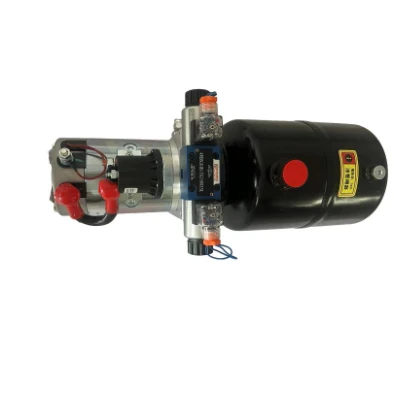Dec . 15, 2024 14:17 Back to list
Hydraulic Boom Cylinder Solutions for Enhanced Performance and Reliability in Heavy Machinery
Understanding Hydraulic Boom Cylinder Products A Comprehensive Overview
Hydraulic boom cylinders play a crucial role in various industries, particularly in construction, manufacturing, and material handling. These powerful hydraulic components are essential for the operation of equipment such as excavators, cranes, and forklifts, allowing for the controlled lifting and extension of loads. This article delves into the design, functioning, applications, and advantages of hydraulic boom cylinder products.
What is a Hydraulic Boom Cylinder?
A hydraulic boom cylinder is a linear actuator that utilizes hydraulic fluid to generate motion. It consists of a cylindrical tube, a piston, and various seals to ensure that the hydraulic fluid is contained within the cylinder. When hydraulic fluid is pumped into one side of the cylinder, it forces the piston to move, which in turn extends or retracts the boom. The operation is controlled by a hydraulic system, typically managed by levers or joysticks that enable precise movement of heavy loads.
Key Components of Hydraulic Boom Cylinders
1. Cylinder Body The main structure that houses the piston and fluid. 2. Piston A sliding component that moves within the cylinder, translating hydraulic pressure into linear motion. 3. Seals and Gaskets These components prevent hydraulic fluid from leaking and ensure that the system operates efficiently. 4. Rod Attached to the piston, the rod extends out of the cylinder to connect with the boom or load. 5. Ports Inlets and outlets for hydraulic fluid to enter and exit the cylinder.
How Hydraulic Boom Cylinders Function
Hydraulic boom cylinders operate on the basic principle of Pascal’s law, which states that when pressure is applied to a confined fluid, it transmits the pressure equally in all directions. When a hydraulic pump sends fluid into the cylinder, it creates pressure that pushes the piston, moving the connected boom or load. The movement can be controlled by adjusting the flow of hydraulic fluid, allowing operators to raise, lower, or extend the boom with precision.
Applications of Hydraulic Boom Cylinders
hydraulic boom cylinder products

Hydraulic boom cylinders are utilized in a variety of applications across different industries
- Construction In excavators and cranes, boom cylinders enable the lifting and manipulation of heavy materials, making them indispensable on construction sites. - Manufacturing Hydraulic systems in assembly lines use boom cylinders to move components and operate machinery, enhancing efficiency. - Material Handling Forklifts and pallet jacks rely on hydraulic boom cylinders to lift and transport goods, making them vital in warehouses and distribution centers. - Industrial Equipment Many specialized machines, such as dump trucks and mobile lifts, utilize hydraulic boom cylinders for their lifting capabilities.
Advantages of Hydraulic Boom Cylinder Products
1. High Strength and Load Capacity Hydraulic boom cylinders are designed to handle substantial weights, making them ideal for heavy-duty applications. 2. Precision Control Operators can achieve fine control over the movement of loads, allowing for more accurate positioning and operation. 3. Durability and Longevity Constructed from robust materials, hydraulic boom cylinders are built to withstand harsh operating conditions and have a long service life. 4. Versatility These cylinders can be adapted for use in various equipment and settings, demonstrating flexibility in application. 5. Efficiency Hydraulic systems offer rapid response times and increased efficiency in operations compared to mechanical systems.
Choosing the Right Hydraulic Boom Cylinder
When selecting a hydraulic boom cylinder for specific applications, several factors should be considered
- Load Capacity Determine the maximum weight that will be lifted to ensure the cylinder can handle the required load. - Stroke Length Assess the distance the boom needs to extend and retract to select an appropriate cylinder size. - Operating Pressure Be aware of the hydraulic system’s maximum operating pressure to ensure compatibility. - Environmental Conditions Consider any external conditions such as temperature, moisture, and contaminants, which may affect cylinder performance.
Conclusion
Hydraulic boom cylinders are fundamental components that drive the efficiency and effectiveness of heavy machinery in various sectors. Understanding their design, operation, and applications can help businesses maximize productivity and ensure safe handling of materials. As industries continue to evolve, hydraulic technology will remain at the forefront of innovation, leading to enhanced capabilities and advancements in equipment performance. Whether in construction, manufacturing, or material handling, the role of hydraulic boom cylinder products cannot be overstated, making them a cornerstone of modern engineering and industrial operations.
-
China Carbon Fiber Hydraulic Cylinder Light & Durable
NewsJun.05,2025
-
Premium T5 Hydraulic Slave Cylinder Factories Quality Production
NewsJun.05,2025
-
Wingspan Power Unit Company Efficient Power Solutions for Industry
NewsJun.04,2025
-
High-Performance Wingspan Power Unit Products Energy Solutions
NewsJun.04,2025
-
Premium Curved Hydraulic Cylinders Durability & Precision
NewsJun.04,2025
-
Heavy-Duty 3x8 Hydraulic Cylinder Premium Industrial Solution
NewsJun.04,2025
